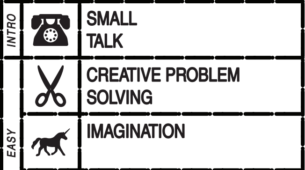Monument Valley 2, developed by Ustwo, is a puzzle game that you can download through Netflix games on iOS, Android, and Windows. The story of Monument Valley 2 follows Ro and her child, as they (and the user) figure out how to navigate architectural challenges. The game is clearly built to be an abnegation game, a break from the world and de-stressing game for casual players. Its core challenge is around optical illusions, creating a captivating and other-worldly experience for the user. I believe that Monument Valley 2’s simple, reversible mechanics and complete absence of a failure state create a calm, de-stressing, and exploratory puzzle experience, as it naturally and through the story emphasizes exploration and guidance rather than solving a puzzle.

The core mechanic of Monument Valley 2 is manipulating the environment and architecture around you – rotating platforms, sliding pathways, etc. Unlike traditional puzzle games that increase in difficulty or want you to progress through a screen, Monument Valley 2 keeps every action entirely reversible and keeps the mechanics simple, repetitive, and predictable. If I rotate a bridge in the wrong direction or move a platform too far, they can simply move it back. This reversibility not only limits frustration but also creates a sense of exploration, without having the time pressure of a clock or winning. Instead, this allows players like me to be calmer, exploring the space, story, and admiring the art rather than focusing on mastery.


Because of this, it is impossible to fail the game. Instead, you can simply try out different things, explore the world and its architecture, and move Ro or her child around until you reach a spot that takes you to the next level. This absence of failure also creates a very peaceful emotional state, also feeding into that ability to be an abnegation game. This lack of failure is supported by the game’s central theme – the bond between Ro and her child. The puzzles aren’t supposed to be won or seen as items to win but rather as learning experiences and lessons, where it’s okay to make mistakes. This also helps frame the user as a teacher and guide, creating a feeling of peace, support, learning, and growth throughout the game.
In terms of the gameplay itself, Monument Valley 2 creates a feeling through a combination of its mechanics, dynamics, and aesthetics. In terms of the mechanics, the game mechanics are extremely simple. There are very few things a player can do at any level, and most of them are within the realm of rotating, sliding, and aligning structures, all of which are reversible. These simple mechanics foster a calm playing experience, and creates a sense of exploration rather than skill-building or puzzle-solving.
On top of that, the game is paced slowly, with the player walking at a calm speed, also seeming like they are exploring the space. There is no way to fail, but also no way to hurt the character or make them walk off the edge of the structure. This de-stresses the player, again fostering that sense of curiosity, exploration, and calmness. When the player is not actively doing something, the game and player are still, not moving, simply existing in space. This all creates a low-pressure atmosphere.
Finally, the aesthetics of the game match this gameplay and foster the same feelings. The visual aesthetics are beautiful and are in soft, pastel colors, creating a feeling of calmness as well as an appreciation of the game as an art rather than just something to be won, slowing me down as a player and letting me appreciate the journey more. And while layering, warm, calm music plays in the background, making the player calmer, and filling the air when the game is still.

One of the things that is special about Monument Valley is that it relies on very little pre-existing knowledge. While there are absolutely some problem solving skills that a player needs to have in order to solve the puzzles, the game is generally easily accessible and playable to a variety of people. This is due to a combination of the simple mechanics, the focus on the feeling of exploration and journey, the consistent simplicity of the puzzles throughout the game rather than an increasing amount of difficulty, and finally also due to the fact that no one is generally familiar with optical illusions and architectural manipulations in real life, so everyone is on about the same base as the enter the game. These all also cater well to those with learning disabilities or difficulty with motor control playing the game, but the mechanics make it more difficult for those with visual impairments from playing, due to its precise architecture being critical to the gameplay. If there were ways to play just the subset of levels that catered to a particular audience or were easier or had less moving parts, that might make it more accessible, as there is currently no way to skip past levels.
Overall, I really enjoyed Monument Valley 2, much more than I thought, and I think it’s a beautifully and artfully created game that in design, mechanics, and gameplay achieves the purpose it has chosen to focus on.


